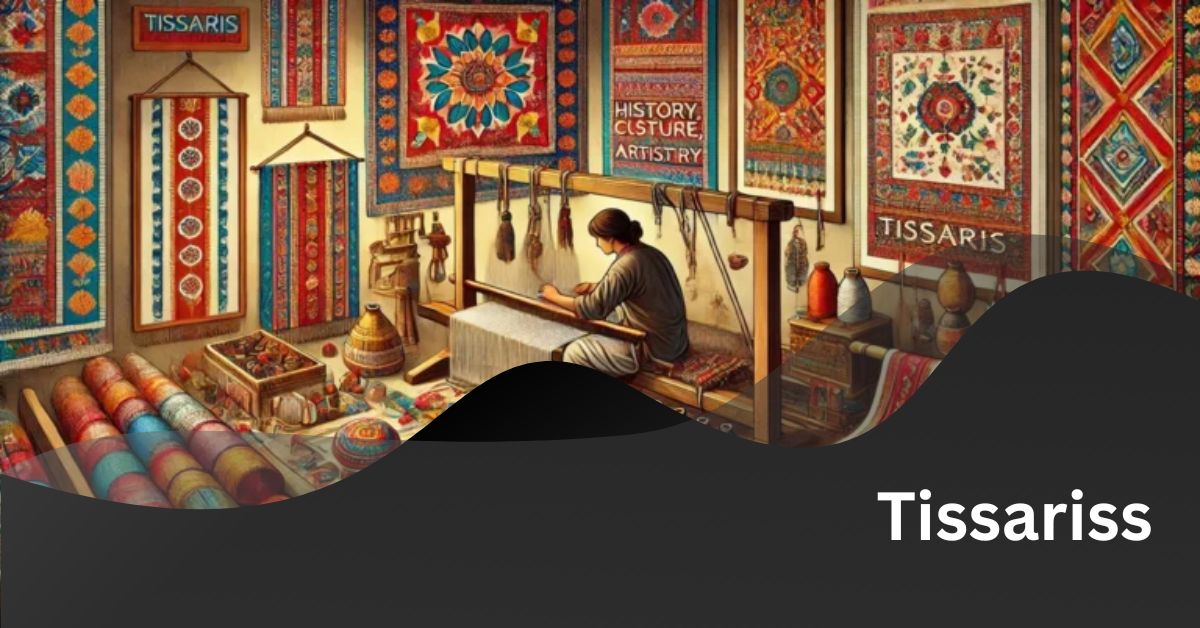Tissariss is more than just a weaving technique; it is a vibrant expression of culture and artistry that has captivated people for generations. This ancient craft blends tradition with modern creativity, creating unique textiles that tell powerful stories. In this article, we’ll explore the fascinating world of Tissariss, its historical significance, craftsmanship, and its role in today’s art scene.
What is Tissariss?
Tissariss refers to a specific weaving technique known for its intricate patterns and rich colors. Originating from ancient cultures, this craft is deeply rooted in tradition. Each piece created through Tissariss carries a story and reflects the cultural heritage of the artisans. The process involves careful planning and skilled hands, resulting in textiles that are not only beautiful but also meaningful.
A Brief History of Tissariss
The history of Tissariss can be traced back to ancient civilizations. Weaving was a crucial skill that served both functional and artistic purposes. In many cultures, textiles were used in ceremonies, trade, and everyday life. The patterns and colors found in Tissariss designs often hold specific meanings, symbolizing concepts like fertility, protection, or community.
Artisans dedicated their lives to mastering this craft, passing down their knowledge through generations. The skills involved in Tissariss weaving have evolved but remain tied to their historical roots, making this art form a vital link to the past.
The Craftsmanship Behind Tissariss
Creating Tissariss textiles requires incredible craftsmanship. Artisans begin by selecting high-quality materials such as cotton, silk, or wool. These materials are often dyed using natural or synthetic dyes, with artisans carefully choosing colors that align with the intended design.
The weaving process itself is a meticulous art. Skilled weavers work on looms, threading their chosen materials in a way that brings their patterns to life. This can take hours, days, or even weeks, depending on the complexity of the design. The result is a unique piece that showcases both technical skill and artistic vision.
Techniques and Patterns
Tissariss techniques can vary, but they often combine traditional hand-weaving methods with modern technology. This allows artisans to create intricate designs that appeal to contemporary tastes while still honoring their cultural origins.
The patterns used in Tissariss textiles often draw inspiration from nature, folklore, and traditional symbols. Geometric shapes, floral motifs, and abstract designs are common, each selected for its aesthetic beauty and cultural significance.
The Role of Tissariss in Contemporary Art
Today, Tissariss is making waves in the contemporary art scene. Artists and designers are increasingly incorporating this weaving technique into their work, creating pieces that resonate with both traditional and modern audiences. This fusion allows for a broader appreciation of Tissariss and highlights its relevance in today’s artistic landscape.
Cultural Importance
The significance of Tissariss extends beyond its visual appeal. It embodies a connection to cultural heritage and serves as a celebration of craftsmanship. Each piece is a reminder of the stories and traditions of the people who create them. Supporting Tissariss artisans helps preserve these invaluable cultural practices and encourages the continuation of this ancient craft.
Sustainability in Tissariss
As the world becomes more conscious of sustainability, many Tissariss artisans are embracing eco-friendly practices. By using natural dyes and locally sourced materials, they produce textiles that are not only beautiful but also environmentally responsible. This commitment to sustainability resonates with consumers who value ethical craftsmanship.
How to Appreciate and Engage with Tissariss
For those interested in Tissariss, there are several ways to appreciate and engage with this art form. Here are some ideas:
Attend Workshops
Many artisans offer workshops where you can learn the basics of Tissariss weaving. These hands-on experiences provide valuable insights into the techniques and effort that go into creating each piece. You’ll leave with a greater appreciation for the craft and perhaps even a piece of your own creation.
Visit Exhibitions and Galleries
Look for exhibitions featuring Tissariss art in local galleries and museums. Many contemporary artists showcase their work using this technique, allowing you to see the beauty and complexity of Tissariss textiles up close. These exhibitions often provide context about the cultural significance of the pieces on display.
Support Local Artisans
Purchasing Tissariss textiles from local artisans not only supports their work but also allows you to own a unique piece of art with a story. Many artisans sell their creations at craft fairs, online marketplaces, or local shops. By choosing to buy directly from them, you help sustain their craft and contribute to the preservation of their cultural heritage.
Incorporate Tissariss into Your Home
Consider incorporating Tissariss textiles into your home decor. From wall hangings to table runners, these pieces can add a touch of culture and artistry to your space. They make for excellent conversation starters and can infuse warmth and personality into any room.
The Future of Tissariss
As we move forward, Tissariss will continue to evolve. The blend of traditional techniques with modern influences ensures that this art form remains relevant and appealing to new generations. With increasing interest in sustainable practices and cultural preservation, Tissariss is poised to capture the hearts of art lovers and casual admirers alike.
Artisans and designers will likely continue to push the boundaries of this weaving technique, exploring new materials, patterns, and applications. This innovation, rooted in tradition, is what makes Tissariss such a vibrant and dynamic art form.
Conclusion:
Tissariss is not just a craft; it is a rich tapestry of culture, history, and artistry. By exploring this art form, we honor the artisans who dedicate their lives to preserving these skills and stories. Whether through purchasing, participating in workshops, or simply appreciating the craft, there are many ways to engage with Tissariss and ensure its legacy continues for future generations.
FAQs:
1. What is Tissariss?
Tissariss is a traditional weaving technique known for its intricate patterns and vibrant colors, reflecting cultural heritage and artistic expression.
2. How is Tissariss different from other weaving techniques?
Tissariss features unique patterns and meanings, often inspired by nature and folklore, distinguishing it from other weaving styles.
3. Where can I learn more about Tissariss?
You can learn about Tissariss through workshops, exhibitions, and online resources focused on traditional weaving techniques.
4. Are Tissariss textiles sustainable?
Many Tissariss artisans practice sustainability by using natural dyes and locally sourced materials, making their textiles environmentally friendly.
5. How can I support Tissariss artisans?
Support Tissariss artisans by purchasing their work, attending craft fairs, or participating in workshops to learn more about the craft.
6. What materials are used in Tissariss?
Common materials include cotton, silk, and wool, often dyed in vibrant colors to create intricate designs.
7. Can Tissariss be used in modern fashion?
Yes! Many contemporary designers incorporate Tissariss techniques into clothing and accessories, blending tradition with modern style.
8. Is Tissariss art expensive?
The price of Tissariss art can vary widely based on design complexity, materials, and the artisan’s skill level, with options available for different budgets.
9. What are some common motifs in Tissariss designs?
Common motifs include geometric shapes, floral designs, and abstract representations, each carrying specific cultural meanings.
10. How can I incorporate Tissariss into my home decor?
Use Tissariss textiles in various ways, such as wall hangings, table runners, or cushions, to add culture and artistry to your space.



